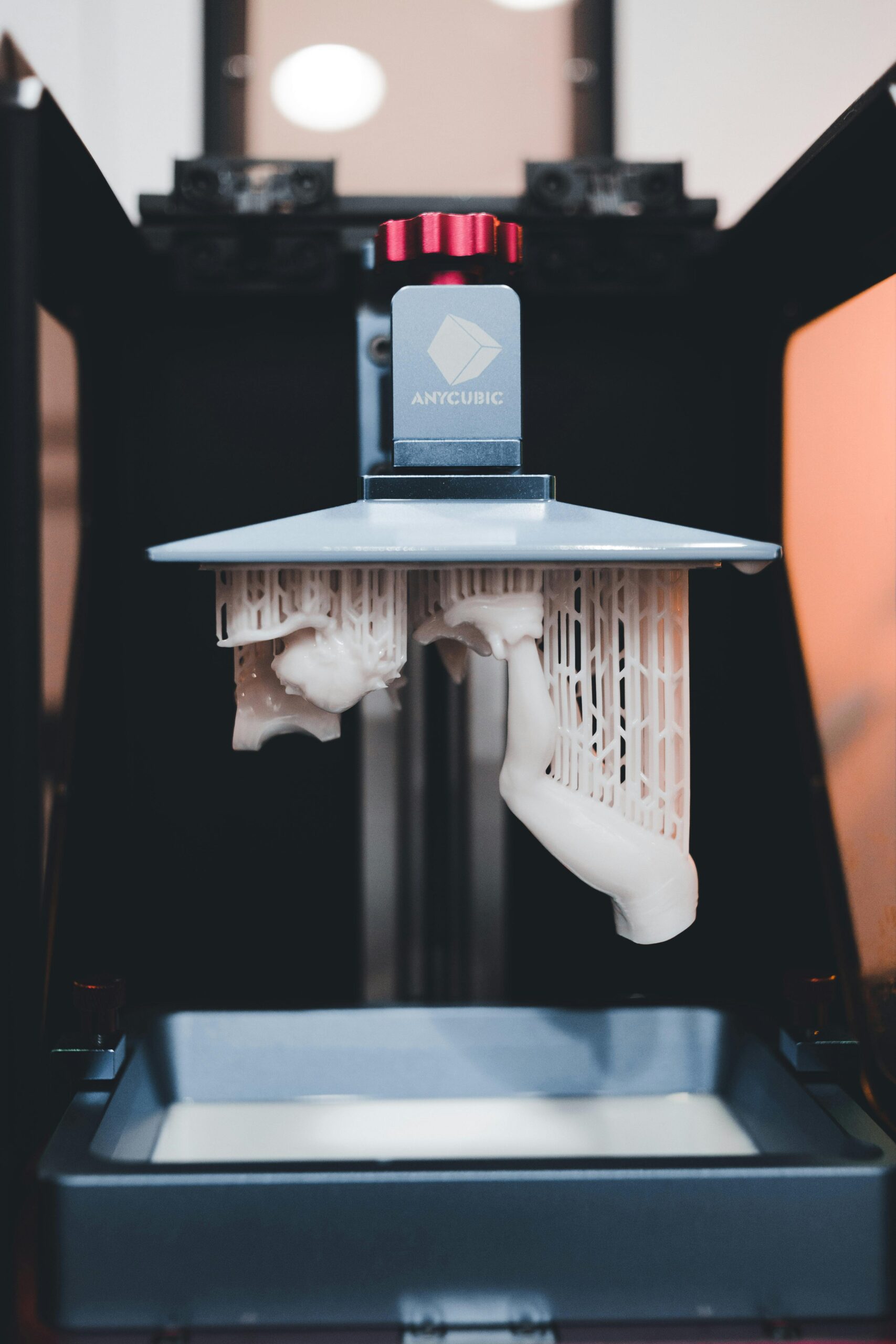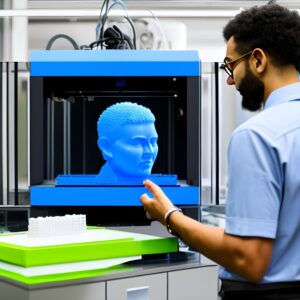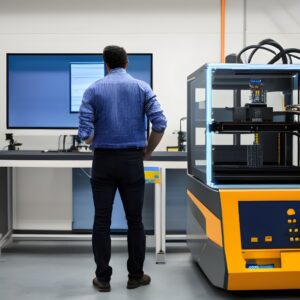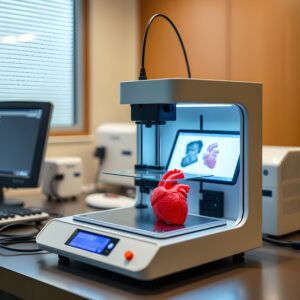SLA 3D Printing: The Ultimate Solution for Precision and Speed

Discover the world of SLA 3D printing technology, known for its exceptional precision and speed. Learn about its advantages, applications, and how it’s changing industries.
Stereolithography (SLA) is one of the most advanced 3D printing technologies, renowned for its precision and speed. If you’re looking for high-quality 3D prints with intricate details, SLA is an ideal solution. Unlike other 3D printing technologies like FDM (Fused Deposition Modeling), SLA utilizes a laser to cure liquid resin, layer by layer, creating incredibly fine details that are often impossible to achieve with other methods. This makes SLA a go-to for professionals in industries such as healthcare, automotive, and jewelry design.
In this ultimate guide to SLA 3D printing, we will cover everything from how the technology works to its benefits, applications, and common challenges. Whether you are a hobbyist or a professional, this guide will help you understand why SLA is a leading solution for precision and speed in the 3D printing world.
How SLA 3D Printing Works
1. The Basic Process of SLA
SLA 3D printing involves a process where a liquid photopolymer resin is cured using a UV laser. The laser selectively cures and hardens the resin layer by layer, with each layer of resin solidifying as the printer’s build platform lowers into the tank of resin.
Here’s a breakdown of the process:
-
Step 1: The Resin Tank
The SLA printer starts with a tank filled with liquid photopolymer resin. This resin is a special type of plastic that can harden when exposed to UV light. The tank is equipped with a transparent window at the bottom, which allows UV light to pass through it. -
Step 2: Laser Curing Process
A laser beam is directed onto the resin’s surface to selectively cure the liquid. The laser follows the path outlined by the 3D model data, hardening only the areas that are supposed to form part of the model. -
Step 3: Layer-by-Layer Construction
After each layer is cured, the build platform moves down by a fraction of a millimeter, and the resin is replenished. This process continues until the entire model is fully printed. -
Step 4: Post-Processing
After printing is complete, the part is removed from the build platform and washed in isopropyl alcohol to remove any excess resin. Additional curing may be required to fully harden the object. Finally, the part is ready for use or further finishing (such as sanding or painting).
2. Types of SLA 3D Printers
There are several types of SLA printers available on the market, each offering varying levels of precision, speed, and affordability. The most common types include:
-
Laser SLA Printers
These printers use a laser beam to cure the resin. The laser’s precision is what gives SLA its incredibly fine detail. -
DLP (Digital Light Processing) Printers
DLP is another variation of SLA printing. Instead of a laser, a DLP projector shines light on the resin to cure an entire layer at once. DLP printers are faster than traditional SLA printers and are often used for applications where speed is crucial.
Advantages of SLA 3D Printing
1. Exceptional Precision and Detail
One of the biggest advantages of SLA 3D printing is its ability to produce highly detailed parts with incredible accuracy. The laser used in SLA can focus to a very fine point, allowing it to create intricate details and smooth finishes. This makes SLA ideal for industries like dental, jewelry, and prototyping, where precision is paramount.
2. Smooth Surface Finish
SLA parts tend to have smoother surface finishes compared to other types of 3D printing, such as FDM. The layer lines produced by the SLA process are almost invisible to the naked eye, giving the printed model a polished and refined appearance. This smooth finish means less post-processing is needed, saving both time and effort.
3. Speed
While SLA printing can be slower than some other methods, especially in large prints, it is still much faster than other high-precision techniques like CNC machining or casting. DLP-based SLA printers also speed up the process by curing an entire layer of resin at once, making SLA a fast and efficient way to produce high-quality prints.
4. Wide Range of Materials
SLA printers use a variety of resin materials, offering a broad selection for different applications. These materials range from flexible resins to high-temperature-resistant resins and even castable resins for jewelry casting. The versatility of materials is one of the key factors in SLA’s widespread use.
Applications of SLA 3D Printing
SLA is a versatile technology that can be used in various industries, from healthcare to engineering. Below are some of the most common applications of SLA 3D printing.
1. Healthcare and Medical Devices
In the medical field, SLA is often used to create customized prosthetics, dental molds, and even anatomical models for surgical planning. Its precision and ability to produce complex geometries make it ideal for these applications. For example, dental laboratories use SLA to create highly accurate molds for crowns, bridges, and dentures.
2. Jewelry Design
Jewelry designers benefit from SLA’s ability to create intricate, high-detail models for casting. The castable resin used in SLA printing allows jewelers to produce a wax model, which can then be used in the lost-wax casting process. This eliminates the need for traditional hand-sculpting and speeds up the production of complex designs.
3. Aerospace and Automotive
SLA printing is increasingly being used in the aerospace and automotive industries to create prototypes, tooling, and end-use parts. The high level of precision makes it ideal for testing aerodynamics, fitment, and functionality in a prototype stage before mass production.
4. Prototyping and Product Development
For product designers and engineers, SLA offers a fast and accurate way to prototype products and parts before committing to expensive tooling or manufacturing processes. Designers can iterate quickly, test designs, and create functional prototypes with fine detail and minimal errors.
Challenges and Limitations of SLA 3D Printing
1. Material Limitations
While SLA offers a variety of resins, it is still somewhat limited compared to other technologies like FDM when it comes to material selection. The types of resins available may not have the same strength, flexibility, or heat resistance as materials used in FDM printing or injection molding.
2. Post-Processing Time
After printing, SLA parts require significant post-processing. This can include washing the print, curing it further, and removing supports. This extra time may not be ideal for those looking for a quick turnaround, especially for large-scale projects.
3. Cost
SLA printers and materials tend to be more expensive than other 3D printing technologies like FDM. While prices for consumer-level SLA printers have come down in recent years, the cost of resin and the printer itself can still be prohibitive for some hobbyists or small businesses.
SLA 3D Printing vs. FDM 3D Printing
| Feature | SLA 3D Printing | FDM 3D Printing |
|---|---|---|
| Precision | High precision and fine detail | Moderate precision, visible layer lines |
| Materials | Limited selection of resins, but specialized options available | Wide variety of filaments (PLA, ABS, PETG, etc.) |
| Surface Finish | Smooth surface finish with minimal post-processing | Rougher surface finish, may require sanding |
| Speed | Slower for larger prints, faster for smaller ones | Faster for larger prints |
| Cost | More expensive for both printers and materials | More affordable for both printers and materials |
SLA 3D printing is a powerful technology that provides incredible precision, smooth finishes, and versatile material options. Its applications in industries like healthcare, jewelry, automotive, and prototyping showcase its ability to solve complex design challenges. While SLA comes with a few challenges, including material limitations and post-processing time, its advantages make it a go-to solution for those who require high-quality prints.
Whether you’re a hobbyist looking to create detailed models or a professional in need of precise prototypes, SLA 3D printing offers the speed and accuracy you need. As the technology continues to evolve, we can expect even more exciting innovations that further expand its capabilities.
Frequently Asked Questions (FAQ)
-
What is SLA 3D printing?
SLA (Stereolithography) is a 3D printing technology that uses a laser to cure liquid resin, layer by layer, to create detailed and precise models. -
How does SLA printing differ from FDM?
SLA uses a laser to cure resin, creating smoother surfaces and higher precision compared to FDM, which extrudes filament to build up layers. -
What are the benefits of using SLA?
SLA provides exceptional precision, smooth finishes, and a wide range of materials, making it ideal for detailed prototypes and functional parts. -
What are the main applications of SLA?
SLA is commonly used in healthcare for prosthetics, in jewelry design for casting, and in automotive and aerospace for prototyping. -
Can I use SLA to create large parts?
While SLA is capable of creating large parts, the process can be slower for larger models, and post-processing may be more time-consuming. -
What types of materials are used in SLA?
SLA printers use photopolymer resins, with options available for flexibility, high-temperature resistance, and castable resins for jewelry. -
What is post-processing in SLA printing?
Post-processing involves removing the printed model from the build platform, cleaning it, and curing it further to ensure full hardness. -
Are SLA printers expensive?
Yes, SLA printers and their resins are typically more expensive than other 3D printing technologies like FDM, though prices have been decreasing in recent years. -
Can SLA be used for mass production?
SLA is primarily used for prototyping and small batch production. It is not yet ideal for large-scale mass production compared to other manufacturing methods. -
How accurate is SLA printing?
SLA printing is highly accurate and can produce parts with very fine details, making it ideal for applications that require precise tolerances. -
How do SLA printers handle support structures?
SLA printers use support structures to prevent overhangs from failing during printing. These structures are removed after printing is completed. -
What is the difference between DLP and SLA?
DLP (Digital Light Processing) uses a projector to cure resin layer by layer, while SLA uses a laser. DLP is faster than traditional SLA. -
Can I use SLA for functional parts?
Yes, SLA can be used to create functional parts, especially for applications that require high precision or intricate details. -
Do SLA prints require much post-processing?
Yes, post-processing is required, including cleaning the model and further curing it to achieve optimal strength and surface finish. -
What are the limitations of SLA printing?
SLA printing has limitations in terms of material variety, print size, and post-processing time. Additionally, the resins can be expensive.
If you found this helpful, please stay tuned to our blogs where we will dive further into 3D printing.





